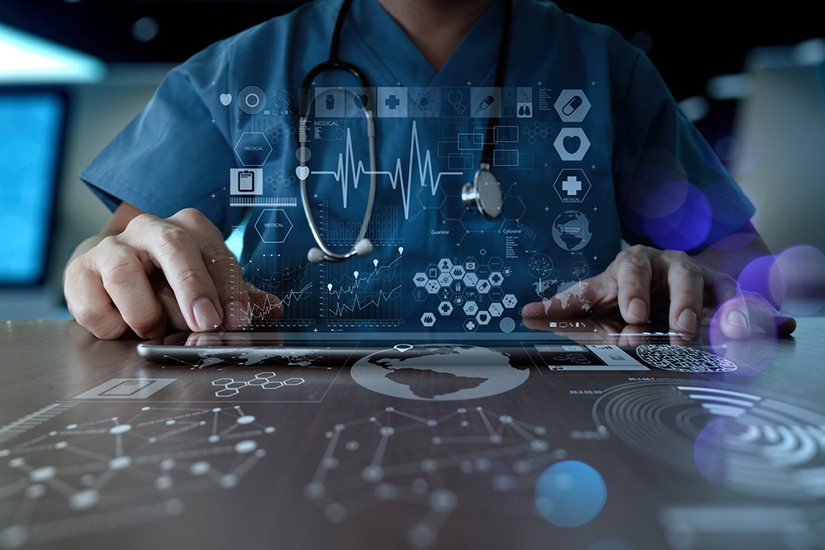Healthcare’s Revolutionary Tech Transformation Today (Article Content


The healthcare landscape is undergoing its most significant transformation in a century, moving beyond incremental improvements to fundamental paradigm shifts. While pharmaceutical discoveries remain crucial, the current revolution is being driven by digital technologies, data science, and patient-centered design that are collectively reshaping every aspect of medical practice. From artificial intelligence diagnostics to personalized gene therapies, healthcare innovation is no longer a future promise but a present reality that’s improving outcomes, expanding access, and redefining what’s medically possible. This comprehensive analysis explores the groundbreaking technologies and approaches that are actively transforming healthcare delivery, patient experiences, and medical possibilities in today’s clinical environments.
A. The Diagnostic Revolution: AI and Precision Detection
The foundation of effective healthcare has always been accurate diagnosis, and technological advancements are revolutionizing how diseases are detected and characterized.
A. Artificial Intelligence in Medical Imaging: Radiology and pathology are experiencing their most significant transformation since the discovery of X-rays.
-
Enhanced Detection Capabilities: AI algorithms can now analyze medical images with superhuman accuracy, identifying subtle patterns invisible to the human eye. Systems like Google’s LYNA can detect metastatic breast cancer with 99% accuracy in lymph node biopsies, reducing false negatives by 85%.
-
Workflow Optimization: AI-powered triage systems automatically prioritize critical cases in radiologists’ workflows, ensuring that patients with life-threatening conditions like strokes or pulmonary embolisms receive immediate attention. This reduces diagnosis time from hours to minutes in emergency situations.
-
Predictive Analytics: Advanced imaging AI can now predict disease progression and treatment response by analyzing subtle changes in serial scans over time, enabling more proactive intervention strategies for conditions like Alzheimer’s and cancer.
B. Liquid Biopsies and Early Detection: The emergence of liquid biopsy technology represents a fundamental shift in cancer detection and monitoring.
-
Non-Invasive Cancer Screening: Companies like GRAIL and Guardant Health have developed blood tests that can detect over 50 types of cancer through circulating tumor DNA (ctDNA) analysis, often before symptoms appear and when treatments are most effective.
-
Treatment Monitoring: Unlike traditional tissue biopsies, liquid biopsies can be performed repeatedly to monitor treatment response and detect resistance mutations in real-time, allowing for dynamic treatment adjustments.
-
Minimal Residual Disease Detection: Following cancer treatment, liquid biopsies can detect microscopic amounts of remaining cancer that would be invisible to conventional imaging, identifying patients at risk of recurrence much earlier.
C. Multi-Omics Integration: The convergence of genomics, proteomics, metabolomics, and microbiomics is creating comprehensive diagnostic profiles.
-
Comprehensive Risk Assessment: By analyzing multiple biological data layers simultaneously, clinicians can develop holistic understanding of disease risk and progression patterns that single-marker tests cannot provide.
-
Personalized Diagnostic Panels: Integrated omics approaches enable the creation of personalized diagnostic baselines that account for individual biological variability, significantly improving diagnostic accuracy over population-based reference ranges.
-
Dynamic Health Monitoring: Continuous multi-omics profiling allows for tracking health trajectories rather than just snapshot assessments, enabling truly preventive and personalized healthcare approaches.
B. Treatment Transformation: From Generalized to Personalized Medicine
The one-size-fits-all treatment model is being replaced by increasingly precise and personalized therapeutic approaches powered by technological breakthroughs.
A. Gene and Cell Therapies: We are entering the era of truly curative treatments rather than symptom management.
-
CRISPR-Based Therapeutics: Following the first FDA approval of CRISPR-based therapies for sickle cell disease and beta thalassemia, gene editing is moving from theoretical possibility to clinical reality, offering potential cures for previously untreatable genetic conditions.
-
CAR-T Cell Expansion: While initially successful for blood cancers, CAR-T therapies are now being engineered to target solid tumors and autoimmune conditions, with next-generation “off-the-shelf” allogeneic approaches overcoming previous limitations of personalized manufacturing.
-
Stem Cell Engineering: Advanced stem cell technologies are enabling the regeneration of damaged tissues and organs, with breakthroughs in Parkinson’s disease treatment, spinal cord injury repair, and Type 1 diabetes management showing remarkable clinical promise.
B. Digital Therapeutics and Connected Care: Software is becoming medicine in its own right, complementing traditional pharmacological approaches.
-
Evidence-Based Digital Interventions: FDA-approved digital therapeutics like Pear Therapeutics’ reSET for substance use disorder and Akili Interactive’s EndeavorRx for ADHD demonstrate that software can deliver clinically validated treatment outcomes.
-
Remote Patient Monitoring Platforms: Integrated systems combining wearable sensors, mobile apps, and cloud analytics enable continuous remote monitoring of chronic conditions, reducing hospitalizations and improving quality of life for patients with heart failure, COPD, and diabetes.
-
Automated Medication Management: Smart systems like Hero and MedMinder ensure medication adherence through automated dispensing, reminders, and caregiver notifications, addressing the $300 billion annual problem of medication non-adherence.
C. Robotic and Minimally Invasive Surgery: Surgical precision is reaching unprecedented levels through advanced robotics and imaging technologies.
-
Next-Generation Surgical Robots: Beyond established systems like da Vinci, new platforms like Verb Surgical and Vicarious Surgical are incorporating augmented reality, artificial intelligence, and single-port access to make procedures less invasive and more precise.
-
AI-Enhanced Surgical Guidance: Real-time AI analysis of surgical video feeds can identify critical structures, warn of potential complications, and even suggest optimal surgical approaches based on analysis of thousands of previous procedures.
-
Nanoscale Surgical Tools: Emerging technologies like nanobots and laser-based microsurgical systems are enabling procedures at cellular levels, opening possibilities for previously impossible interventions in neurology, ophthalmology, and fetal medicine.
C. The Healthcare Delivery Revolution: Accessibility and Efficiency
Beyond specific treatments and diagnostics, the very structure of healthcare delivery is being transformed by technological and business model innovations.
A. Telehealth and Virtual Care Expansion: The pandemic accelerated a shift to virtual care that continues to evolve and expand.
-
Specialty Telemedicine: Beyond primary care, specialties like psychiatry, dermatology, and endocrinology are demonstrating excellent outcomes through virtual care models, particularly for medication management and follow-up care.
-
Hybrid Care Models: Health systems are developing sophisticated protocols for determining which conditions are best managed virtually versus in-person, creating seamless patient experiences while optimizing resource utilization.
-
Asynchronous Telehealth: Platforms like Teladoc and Amwell are enabling care delivery through secure messaging and photo sharing, increasing convenience while reducing costs for non-urgent conditions.
B. AI-Powered Clinical Decision Support: Healthcare providers are gaining powerful AI assistants that enhance their diagnostic and treatment capabilities.
-
Differential Diagnosis Generators: Tools like Isabel and Buoy Health use AI to help clinicians consider all possible diagnoses, reducing diagnostic errors that affect an estimated 12 million Americans annually.
-
Evidence-Based Treatment Recommendations: Systems like IBM Watson for Genomics and Tempus analyze patient data against current medical literature to suggest targeted treatment options aligned with the latest research.
-
Clinical Workflow Optimization: AI systems are reducing administrative burden by automating documentation, prior authorization, and coding, allowing clinicians to focus more time on patient care.
C. Blockchain and Healthcare Data Management: Secure, interoperable health data exchange is finally becoming possible through distributed ledger technology.
-
Patient-Controlled Health Records: Systems like MedRec and SimplyVital Health are enabling patients to control access to their complete medical history while ensuring privacy and security through cryptographic techniques.
-
Interoperability Solutions: Blockchain-based systems are solving the longstanding problem of health data interoperability, enabling seamless and secure data exchange between different healthcare providers while maintaining a complete audit trail.
-
Clinical Trial Integrity: From patient recruitment to data collection and analysis, blockchain technology is increasing transparency, reducing fraud, and improving reliability in clinical research.
D. Preventive Health and Wellness Technology
The healthcare paradigm is shifting from reactive sick care to proactive health maintenance through continuous monitoring and early intervention technologies.
A. Consumer Health Wearables Evolution: Today’s wearable devices have evolved far beyond simple step counting to sophisticated health monitoring platforms.
-
Medical-Grade Monitoring: Devices like the Apple Watch Series 8 with FDA-cleared ECG functionality and blood oxygen monitoring, along with Fitbit’s atrial fibrillation detection, are bringing hospital-grade monitoring to consumers’ wrists.
-
Continuous Metabolic Tracking: Emerging technologies like continuous glucose monitors are expanding beyond diabetic populations to health-conscious consumers seeking to optimize metabolic health through real-time feedback.
-
Stress and Recovery Analytics: Advanced sensors measuring heart rate variability, skin temperature, and sleep architecture are providing unprecedented insights into stress management and recovery needs.
B. Population Health Analytics: Healthcare organizations are using big data to identify patterns and intervene before health crises develop.
-
Social Determinants Integration: By combining clinical data with information about social determinants of health (housing, transportation, food security), health systems can identify at-risk populations and connect them with appropriate resources.
-
Predictive Risk Stratification: Machine learning algorithms can identify patients at high risk for hospital readmission, complications, or disease development, enabling targeted preventive interventions.
-
Public Health Surveillance: Real-time analysis of aggregated health data from multiple sources is creating early warning systems for disease outbreaks and public health threats.
C. Nutritional Genomics and Personalized Wellness: The science of personalized nutrition is moving from wellness circles to clinical practice.
-
DNA-Based Dietary Recommendations: Companies like Zoe and Habit are using genetic testing, gut microbiome analysis, and continuous glucose monitoring to create highly personalized nutrition plans that optimize metabolic health.
-
Nutrigenomic Interventions: Research is identifying specific nutritional compounds that can modulate gene expression, opening possibilities for food-based interventions for inflammatory conditions, metabolic disorders, and even mental health.
-
Personalized Supplementation: Rather than one-size-fits-all multivitamins, companies are using comprehensive testing to create customized supplement regimens based on individual biochemical needs and genetic predispositions.

E. Implementation Challenges and Ethical Considerations
While healthcare innovations offer tremendous promise, their successful integration requires addressing significant practical and ethical challenges.
A. Regulatory Adaptation and Validation: The rapid pace of technological innovation is straining traditional regulatory frameworks.
-
Algorithm Validation and Monitoring: Regulators are developing new approaches for continuously monitoring AI algorithm performance and detecting drift as clinical environments and patient populations evolve.
-
Digital Health Certification: The FDA’s Digital Health Pre-Cert Program represents an innovative approach to regulating software as a medical device based on the quality and culture of organizations rather than product-by-product review.
-
International Harmonization: Differing regulatory requirements across countries create barriers to global innovation deployment, driving efforts toward international standards alignment.
B. Data Privacy and Security: The increasing digitization of health information creates new vulnerabilities and privacy concerns.
-
De-identification Challenges: As datasets grow richer and more interconnected, traditional de-identification methods are becoming less effective at protecting patient privacy, requiring new technical and policy approaches.
-
Cybersecurity in Connected Medical Devices: The proliferation of internet-connected medical devices from insulin pumps to pacemakers creates new attack surfaces that must be secured against potentially life-threatening cyber threats.
-
Patient Data Ownership and Control: Evolving legal and technical frameworks are redefining how patients control and benefit from their health data in an era of extensive secondary use for research and commercial purposes.
C. Health Equity and Access Considerations: There is significant risk that technological advances could exacerbate existing health disparities.
-
Digital Divide Impacts: Patients without reliable internet access, digital literacy, or modern devices may be excluded from the benefits of telemedicine and digital health tools.
-
Algorithmic Bias Mitigation: AI systems trained on non-representative data may perform poorly for minority populations, requiring deliberate efforts to ensure equitable performance across demographic groups.
-
Global Access Strategies: Innovations must be designed and priced for global accessibility rather than just developed markets to ensure worldwide health benefit.
Conclusion: The Path Forward for Healthcare Innovation
The current wave of healthcare innovation represents the most significant transformation since the germ theory of disease, with potential to dramatically improve human health and longevity. However, realizing this potential requires thoughtful integration of new technologies with human-centered care, addressing implementation challenges with the same creativity applied to technological development. The most successful healthcare organizations will be those that can harness innovation while maintaining the human connection at the heart of healing, using technology to augment rather than replace the clinician-patient relationship. As these technologies continue to mature and converge, we stand at the threshold of a new era in medicine—one characterized by unprecedented precision, accessibility, and prevention rather than reaction. The future of healthcare is not just arriving; it’s being actively built in laboratories, startups, and clinical settings around the world today.
Tags: healthcare technology, medical innovation, digital health, telemedicine, AI healthcare, personalized medicine, health tech, medical devices, healthcare transformation, patient care, medical breakthroughs, healthcare trends




